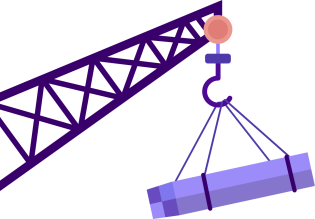Comprehensive Guide to Mining Equipment Maintenance

We’re about to embark on an exciting journey where we’ll explore the ins and outs of keeping your mining equipment in tip-top shape. So, grab your hard hats and let’s get started!
Now, you might be wondering, why the heck is equipment maintenance such a big deal in the mining industry? Well, my friend, mining equipment is like the unsung hero of your operations. It’s the workhorse that tirelessly digs, drills, hauls, and moves mountains of earth to extract those precious minerals and resources.
But here’s the thing: mining equipment is not invincible. It faces a never-ending battle against the harsh elements, heavy loads, and rough terrains. If you neglect its maintenance, you’re setting yourself up for a world of trouble. Equipment breakdowns, unexpected downtime, skyrocketing repair costs, and compromised safety can turn your mining dreams into a nightmare.
That’s where proper equipment maintenance swoops in to save the day! When you take good care of your mining equipment, you’re ensuring its longevity, optimal performance, and the safety of your hard working crew. Plus, it’s a smart financial move, as regular maintenance helps you avoid expensive repairs and replacement expenses down the line.
So, my mining buddies, buckle up, because we’re about to unleash a treasure trove of maintenance tips and best practices to keep your mining equipment humming and your operations running like a well-oiled machine. Get ready to rock and roll with us as we delve into the nitty-gritty details of effective equipment maintenance!
Keep reading to find out how civil management software can help you.
Understanding Key Mining Equipment Components
In the mining industry, regular maintenance of crucial components is essential to ensure smooth operations and optimise productivity. These components include crushers, drills, earthmovers, and blasting tools.
Crushers break down raw materials, drills create access points, earthmovers handle excavation and transportation, and blasting tools aid in extracting and fragmenting rock masses.
By conducting routine maintenance on these components, such as inspecting and lubricating, checking hydraulic systems, and monitoring performance, mining operators can prevent breakdowns, enhance efficiency, and prioritise safety on the mining site.
Essential Daily Mining Equipment Maintenance Checks
Daily maintenance checks play a vital role in preventing breakdowns and accidents in the mining industry. By conducting these checks before using mining equipment, operators can identify potential issues, rectify them promptly, and ensure the safe and efficient functioning of the machinery. Here’s why daily maintenance checks are so important:
Preventing Breakdowns: Daily maintenance checks allow operators to identify any signs of wear and tear, leaks, or damaged components. By catching these issues early on, they can address them before they escalate into major breakdowns, saving valuable time and resources.
Ensuring Safety: Faulty equipment poses significant safety risks to operators and the entire mining team. Daily checks help identify any potential safety hazards, such as loose parts, malfunctioning safety features, or compromised structural integrity, enabling operators to take immediate action and eliminate risks before accidents occur.
Optimal Performance: Regular maintenance checks ensure that mining equipment operates at its peak performance. By inspecting fluid levels, filters, belts, and other critical components, operators can ensure everything is in proper working order, minimising downtime and maximising productivity.
Extending Equipment Lifespan: Mining equipment is a significant investment, and proper maintenance can extend its lifespan. By conducting daily checks and addressing any issues promptly, operators can prevent premature wear and tear, extend the longevity of the equipment, and avoid costly repairs or replacements.
Now, let’s dive into the main checks that should be conducted daily before using mining equipment. Here’s a handy checklist:
Visual Inspection: Look for any visible damages, leaks, loose or missing parts, or signs of abnormal wear and tear. Ensure that all safety features, such as guards and emergency stop buttons, are intact and functional.
Fluid Levels: Check the levels of engine oil, hydraulic fluid, coolant, and fuel. Top up as needed, following the manufacturer’s guidelines.
Filters: Inspect and clean or replace air filters, fuel filters, and hydraulic filters to maintain optimal performance.
Belts and Pulleys: Examine belts for signs of wear, tension, or damage. Check pulleys for misalignment or excessive play.
Lubrication: Ensure all necessary lubrication points are adequately greased according to the manufacturer’s specifications.
Electrical Systems: Check batteries for charge and clean terminals if necessary. Inspect wiring and connectors for any signs of damage or loose connections.
Tires and Tracks: Check tire pressure, tread wear, and overall condition. For tracked equipment, inspect tracks for tension, wear, and damage.
Functional Tests: Conduct functional tests of all equipment controls, gauges, lights, alarms, and safety features to ensure they are working correctly.
By performing these daily checks, mining operators can catch any potential issues early, reduce the risk of breakdowns and accidents, and keep their equipment running smoothly, efficiently, and safely throughout their mining operations.
Periodic Maintenance for Mining Equipment
Regular maintenance tasks are essential for efficient operation in mining equipment. Daily checks help identify immediate issues and ensure safety before equipment operation. Regular inspections, scheduled servicing, and maintenance prevent major breakdowns and costly repairs. Lubrication tasks reduce friction and promote smooth operation. Calibration and testing maintain equipment accuracy. Adhering to maintenance schedules maximises equipment performance, minimises downtime, and enhances overall operational efficiency in the mining industry.
Effective Cleaning and Proper Storage of Mining Machinery & Equipment
Cleaning and storage are essential aspects of mining equipment maintenance as they prevent corrosion, minimise damage, and extend equipment lifespan.
Regular cleaning removes contaminants and prevents corrosion caused by harsh environments. Proper storage in a clean, dry area protects equipment from moisture, extreme temperatures, and corrosive substances.
Tips include using recommended cleaning agents, thorough cleaning of all surfaces, and implementing proper storage measures such as rust inhibitors and regular inspections. These practices contribute to maximising equipment longevity and maintaining optimal performance.
The Importance of Documenting Maintenance Records in the Mining Industry
Creating and maintaining a useful maintenance logbook is crucial for effective equipment management. A maintenance logbook helps track maintenance activities, identify trends, and ensure timely and thorough maintenance. Here’s a guidance summary for creating and maintaining a useful maintenance logbook:
Standardise the Format: Establish a consistent format for your maintenance logbook to ensure clarity and ease of use. Include essential information such as equipment details (make, model, serial number), maintenance tasks performed, date of maintenance, and the name of the technician responsible.
Document Detailed Information: Record comprehensive details of each maintenance activity. Include specific tasks performed, parts replaced, measurements taken, and any adjustments made. This level of detail helps in troubleshooting, analysing trends, and ensuring the accuracy of maintenance records.
Include Maintenance Schedules: Incorporate maintenance schedules in the logbook, indicating when routine maintenance tasks should be performed. This ensures that maintenance activities are conducted in a timely manner and helps prevent equipment issues due to neglect.
Note Observations and Findings: Encourage technicians to include observations and findings in the logbook. This can include any abnormalities, potential issues, or recommendations for future maintenance. It promotes proactive maintenance and allows for better planning and resource allocation.
Track Equipment History: Maintain a history of each equipment’s maintenance activities, repairs, and major overhauls. This information provides valuable insights into the equipment’s performance, reliability, and overall health. It aids in decision-making regarding repairs, replacements, or equipment retirement.
Regularly Review and Analyse Data: Take the time to review the maintenance logbook regularly. Look for patterns, recurring issues, or deviations from expected performance. Analysing the data can help identify areas for improvement, refine maintenance strategies, and optimise equipment performance.
Ensure Accessibility and Documentation Security: Store the maintenance logbook in a secure location and ensure it is easily accessible to authorised personnel. Consider digitising the logbook for ease of retrieval, backup, and sharing across different stakeholders.
Train and Involve Maintenance Personnel: Provide training to maintenance personnel on the importance of accurate logbook maintenance and ensure their active participation. Encourage them to provide detailed and precise entries, and foster a culture of accountability and responsibility for maintenance documentation.
By following these guidelines, you can establish and maintain a useful maintenance logbook that serves as a valuable tool for managing equipment maintenance, improving decision-making, and optimising overall equipment performance and reliability.
Handling Common Mining Equipment Maintenance Issues
When identifying and resolving maintenance issues for heavy mining equipment, consider the following tips:
Regular Inspections: Conduct regular inspections to detect any signs of wear, damage, or abnormalities. Look for leaks, strange noises, vibrations, or performance issues. Early detection can prevent further damage and more costly repairs.
Troubleshooting: If you encounter an issue, try to diagnose the problem by referring to equipment manuals, troubleshooting guides, or online resources. Follow step-by-step procedures to identify the root cause and potential solutions.
Basic Repairs: For minor issues that you have the knowledge and skills to handle, attempt basic repairs. This can include replacing a worn-out part, tightening loose connections, or cleaning clogged filters. Ensure you have the necessary tools and follow safety protocols.
Regular Maintenance: Adhering to routine maintenance schedules and performing preventive tasks can help prevent issues from arising in the first place. Regularly clean, lubricate, and inspect equipment as recommended by the manufacturer.
Engaging Professionals: Some issues may require the expertise of a professional technician or engineer. If you are unsure about the problem, lack the necessary skills, or encounter complex or critical issues, it is best to seek professional help. Engage qualified professionals who specialise in the specific equipment or issue to ensure accurate diagnosis and effective resolution.
Remember, safety should always be the top priority. If you encounter any issues that pose an immediate risk to personnel or property, ensure everyone’s safety first and then seek professional assistance promptly.
Implementing a Preventive Maintenance Program
To implement a comprehensive preventive maintenance program, follow these key elements:
- Create an asset inventory.
- Develop a maintenance strategy aligned with goals.
- Plan maintenance tasks, schedules, and procedures.
- Establish a record-keeping system for maintenance activities.
- Manage spare parts effectively.
- Provide training for maintenance personnel.
- Monitor equipment performance and analyse data.
- Foster a culture of continuous improvement.
- Conduct regular audits and reviews.
By implementing these elements, you can optimise equipment management, enhance reliability, and improve operational efficiency.
Learn more about maintenance practices in our excavator guide.
Safety Considerations in Mining Equipment Maintenance
With the right practices you can easily avoid mining maintenance injuries when handling your underground mining equipment, or large and complicated machines.
Safety is of utmost importance when maintaining mining equipment. A safety-oriented culture ensures the protection of personnel, prevents accidents and injuries, preserves equipment, enhances productivity, fosters teamwork, and promotes continuous improvement.
By prioritising safety and following safe procedures, organisations create a work environment that maximises the well-being of personnel and leads to better maintenance outcomes and overall operational efficiency.
Introducing FieldInsight
FieldInsight is a standout choice for service management software and the mining sector, offering flexibility, customizability, and scalability. With comprehensive features like scheduling, inventory management, GPS tracking, invoicing, and more, it boosts business productivity and control.
FieldInsight stands apart with its commitment to customer success, providing seamless implementation, dedicated support, and continuous improvement to meet evolving needs. Transition to FieldInsight for a hassle-free, all-in-one platform that covers every aspect of your business requirements.
Conclusion
By implementing a proactive preventive maintenance program for your maintenance services, mining companies can avoid costly breakdowns, reduce downtime, enhance safety, and maximise operational efficiency. Regular inspections, scheduled maintenance tasks, and proper record-keeping are all essential elements of such a program. Additionally, creating a safety-oriented culture within the organisation fosters collaboration, productivity, and continuous improvement.
Remember, prevention is always better than cure for your mining machines. By investing time, effort, and resources into preventive maintenance, mining companies can save significant costs in the long run while ensuring smooth operations. Prioritising safety and following best practices in maintenance not only protects personnel but also safeguards valuable equipment assets.
FieldInsight emerges as the ultimate choice for service management software, offering unmatched flexibility, customizability, and scalability. With its comprehensive set of features, seamless implementation process, and dedicated support, FieldInsight empowers your business to thrive like never before.
Make the switch to FieldInsight and experience a hassle-free, all-in-one platform that covers every aspect of your business needs. Your journey towards efficient service management starts with FieldInsight.
What You Should Do Now
- Book a Demo. You’ll be in touch with an automation expert who has worked in this space for over 5 years, and knows the optimal workflow to address your needs.
- If you’d like access to free articles about managing HVAC workflows, go to our blog.
- If you know someone who’d enjoy reading this page, share it with them via email, Linkedin, Twitter, or Facebook.









